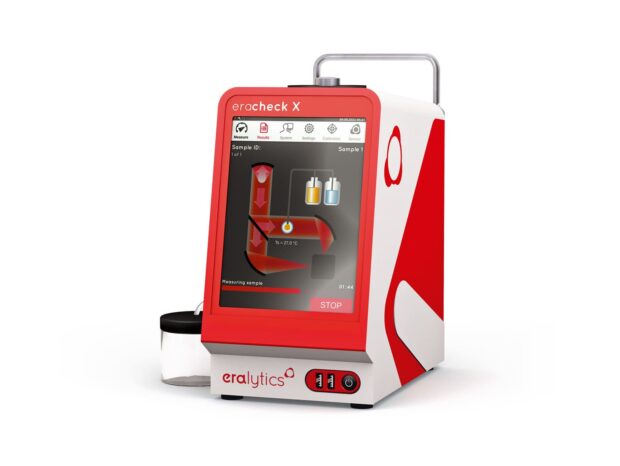Standard Test Method for dimer/trimer of chlorotrifluoroethylene (S-316) Recoverable Oil and Grease and Nonpolar Material by Infrared Determination.
Get more information about the standard at ASTM D7066-04(2024).
ASTM D7066 is a standard test method for determining oil and grease, as well as nonpolar materials, in water and wastewater through infrared (IR) analysis. This method utilizes the solvent dimer/trimer of chlorotrifluoroethylene (S-316) to extract substances from acidified samples, enabling accurate measurement of contaminants that are soluble in this solvent.
The standard ASTM D8193 offers a modern alterative for oil in water testing employing IR spectroscopy an eco-friendly solvent.
Details
The ASTM D7066 test method involves extraction using the S-316 solvent, which selectively dissolves oil, grease, and other nonpolar materials present in the sample.
The extract is subjected to infrared analysis, measuring absorption at a wavelength of 2930 cm⁻¹ (3.4 microns), corresponding to the C-H stretching vibration in aliphatic hydrocarbons. This absorption is directly proportional to the concentration of oil and grease in the sample.
This method is applicable for detecting oil and grease concentrations ranging from 5 mg/L to 100 mg/L.
Industries and Applications
ASTM D7066 is significant in various industries and applications, including:
- Environmental monitoring: Regulatory agencies and environmental organizations employ this method to monitor oil and grease levels in natural water bodies, ensuring compliance with environmental standards and assessing the impact of industrial discharges
- Wastewater treatment: Facilities involved in treating domestic and industrial wastewater utilize this standard to evaluate the efficiency of treatment processes in removing oil and grease contaminants, thereby ensuring the treated water meets discharge regulations.
- Petroleum industry: Oil refineries and petrochemical plants apply this test method to assess the levels of oil and grease in effluents, helping to prevent environmental pollution and comply with legal discharge limits
- Manufacturing sector: Industries such as food processing, textiles, and metalworking use this standard to monitor and control oil and grease discharges in their wastewater, promoting sustainable practices and regulatory adherence

